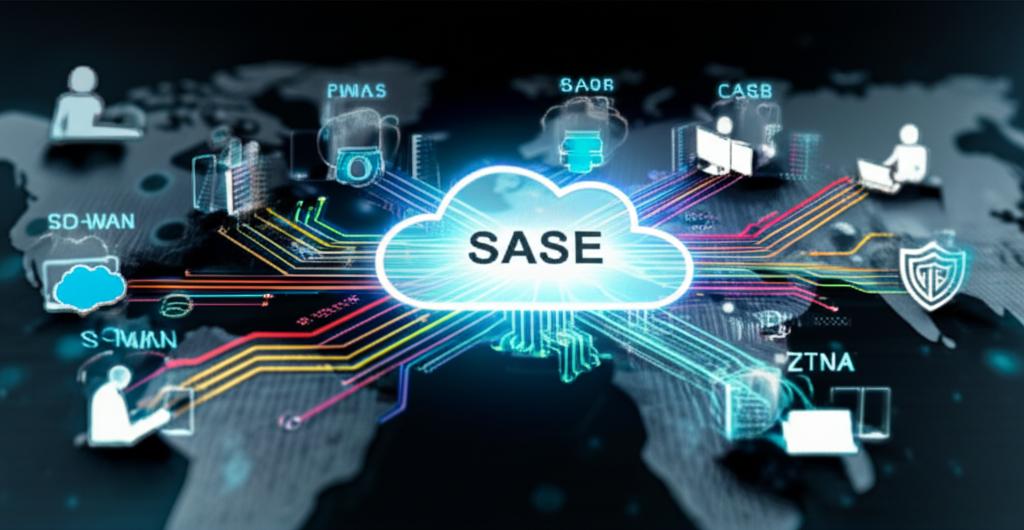Unlocking Enhanced Security: Essential SASE Components Explored
In today’s distributed work environments and cloud-first strategies, traditional network security perimeters are no longer sufficient. The Secure Access Service Edge (SASE), pronounced “sassy,” has emerged as a transformative architecture, converging networking and security functions into a unified, cloud-native service. This powerful framework ensures secure and efficient access for users, regardless of their location or the resources they are trying to reach. But what exactly makes up this robust solution? Let’s delve into the key components that form the backbone of a comprehensive SASE implementation.
Understanding the SASE Imperative
SASE represents a paradigm shift from data center-centric security to identity-driven, cloud-delivered protection. It extends security and networking capabilities directly to the edge, where users and devices connect. This approach significantly reduces complexity, improves performance, and enhances security posture by applying consistent policies across all access points. The core strength of SASE lies in the seamless integration of several critical networking and security functions.
The Core Pillars of SASE: Key Components
A fully realized SASE architecture is built upon a foundation of interconnected technologies. While specific vendor implementations may vary, the following components are universally recognized as fundamental:
1. Software-Defined Wide Area Network (SD-WAN)
- Purpose: Optimizes network traffic routing and connectivity, ensuring high performance and reliable access to cloud applications and services.
- Functionality: Dynamically routes traffic based on application needs and network conditions, providing resilience and quality of service (QoS) across various connection types (broadband, MPLS, 5G).
- SASE Integration: SD-WAN intelligently directs traffic to the nearest SASE PoP (Point of Presence), where security policies are applied, ensuring optimal performance without compromising security.
2. Firewall as a Service (FWaaS)
- Purpose: Provides robust, cloud-delivered firewall capabilities, protecting users and applications from internet threats.
- Functionality: Offers advanced threat prevention, intrusion detection/prevention (IDPS), and granular policy enforcement at a global scale, eliminating the need for on-premises firewall appliances.
- SASE Integration: Centralizes firewall management and policy enforcement across all users and locations, ensuring consistent security posture everywhere.
3. Secure Web Gateway (SWG)
- Purpose: Protects users from web-based threats and enforces internet usage policies.
- Functionality: Filters malicious content, blocks access to inappropriate websites, prevents malware downloads, and offers data loss prevention (DLP) for web traffic.
- SASE Integration: Ensures all web traffic is inspected and secured before reaching users, regardless of their location, protecting against phishing, malware, and other web-borne attacks.
4. Cloud Access Security Broker (CASB)
- Purpose: Extends security policies to cloud applications, both sanctioned and unsanctioned.
- Functionality: Provides visibility into cloud app usage, enforces data security policies (DLP), protects against malware, and ensures compliance for SaaS applications.
- SASE Integration: Secures data in motion and at rest within cloud applications, preventing data exfiltration and ensuring compliance across diverse cloud environments.
5. Zero Trust Network Access (ZTNA)
- Purpose: Replaces traditional VPNs with a more secure, granular access model based on the principle of “never trust, always verify.”
- Functionality: Grants access to specific applications and resources only after explicit verification of user identity, device posture, and other contextual factors. It establishes a micro-segmentation approach.
- SASE Integration: Ensures that only authorized users and devices can access specific resources, significantly reducing the attack surface and preventing unauthorized lateral movement within the network.
The Synergistic Advantage of SASE
The true power of SASE lies not just in these individual components, but in their seamless integration and cloud-native delivery. When combined, these elements:
- Simplify Management: Centralized policy enforcement and management across all networking and security functions.
- Enhance Performance: Optimized routing and local access to cloud services reduce latency.
- Improve Security: Consistent security policies applied everywhere, with advanced threat protection.
- Boost Agility: Scalable and flexible architecture adapts to changing business needs and growth.
- Reduce Cost: Consolidates multiple point solutions into a single, unified service.
Gartner defines SASE as the convergence of wide area networking (WAN) and network security services into a single, cloud-delivered model. This fundamental shift provides secure access and protection for all users and devices, anywhere.
Conclusion
SASE is more than just a collection of security tools; it’s a strategic architecture designed for the future of enterprise networking and security. By integrating SD-WAN, FWaaS, SWG, CASB, and ZTNA into a unified, cloud-native platform, organizations can achieve unparalleled levels of security, performance, and operational simplicity. Embracing SASE is crucial for businesses looking to secure their distributed workforces and accelerate their digital transformation journeys in an increasingly complex threat landscape.







